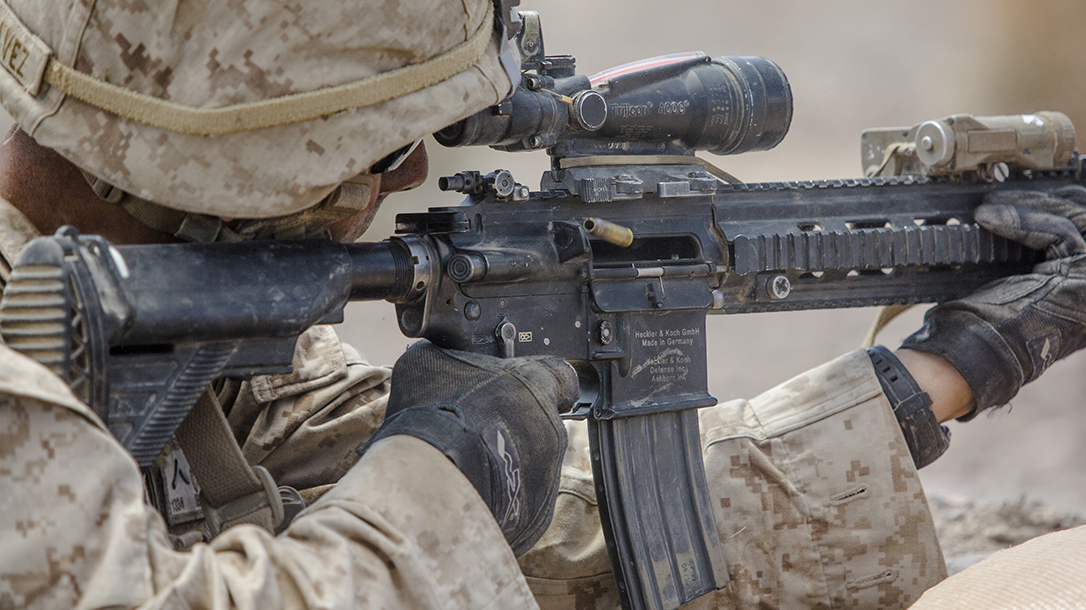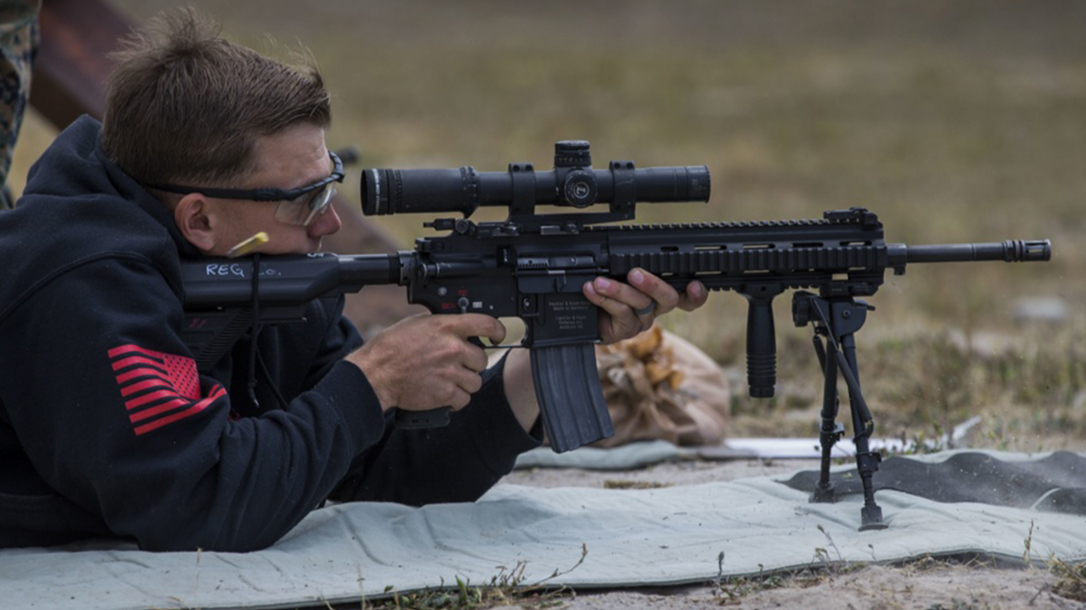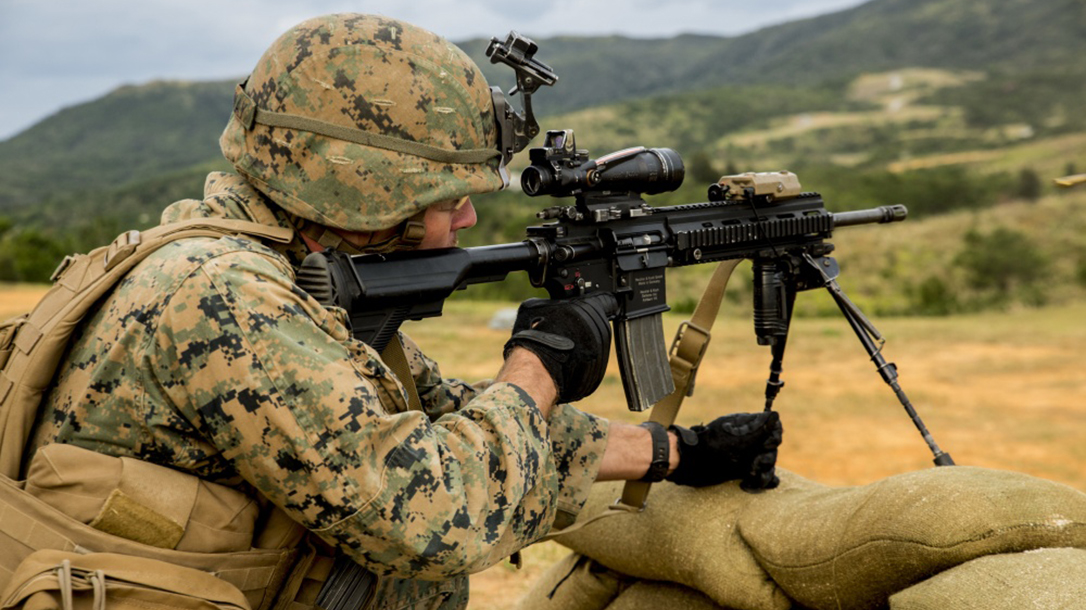In early 2017, Commandant of the Marine Corps Gen. Robert B. Neller said he wanted to equip every 0311 rifleman with the M27 Infantry Automatic Rifle (IAR). Later that year, the service issued a notice of intent to sole source up to 50,814 M27 IARs from Heckler & Koch. Then, in late April of this year, Marine Corps Systems Command revealed it had entered into a $29.4 million contract with HK for the procurement of up to 15,000 M27 IARs to replace the M249 SAW. Now, however, it appears that Congress is withholding some of the $29.4 million needed to pay for those new rifles.
Congress Withholds M27 Funding
According to the Marine Corps Times, language included in the 2019 National Defense Authorization Act withholds 20 percent of the funding for new M27 IAR buys. The reason? The House of Representatives subcommittee on Tactical Air Land in the House Armed Services Committee wants to know more about the Corps’ small arms programs and modernization strategies.
Advertisement — Continue Reading Below
Specifically, Congress wants Neller to lay out exactly how the USMC’s small arms program aligns with the Small Arms Ammunition Configuration Study (SAAC), a multi-year U.S. Army study that reportedly calls for—it hasn’t been released publicly—an intermediate caliber in the 6mm range for carbines and machine guns.
The scuttlebutt is that the Army’s new Next Generation Squad Automatic Rifle will use such an intermediate caliber, possibly a 6.8mm round. Meanwhile, the Times says certain special operations programs have started replacing some 7.62mm sniper rifles with a 6.5mm model.
Thus, some members of Congress if it’s sensible for the Corps to field the 5.56mm M27, especially given that some Army officials have raised concerns that the 5.56mm is incapable of defeating the body armor used by certain adversaries.
Advertisement — Continue Reading Below
USMC Comments
Marine Corps spokesman Richard Long told Task & Purpose that is working “to satisfy the Congressional requirement and enable full execution of the M27 procurement plan.”
“The Army and Marine Corps work closely together to achieve common solutions for the majority of small arms capabilities, to include ammunition and fire control,” Long said. “Marine Corps participation in the Army-led Small Arms Ammunition Configuration (SAAC) study that examined optional ammunition configurations for the infantry squad is another example of this close collaboration and will lead to common requirements and materiel solutions for the next generation of squad weapons.”
Retired Chief Warrant Officer 5 Christian Wade, however, says it makes sense for the Corps and Army to have different needs in terms of their small arms programs.
Advertisement — Continue Reading Below
“The Marine Corps and Army are divergent on their small arms programs because they are divergent on their doctrinal employment of the squad,” Wade said. “That’s not a judgment on the U.S. Army. The Marine Corps has a different squad size with a different composition and different weapons.”
“It’s frustrating to me that they would go: ‘OK, we’re going to let you buy 80 percent. That’s fine. But we’re going to withhold 20 percent and let 20 percent of your riflemen not have that fine rifle,'” Wade added. “What the hell? That does not suggest to me that the motive behind withholding that money has anything to do with warfighting.”
Costs
As Marine Corps Times notes in a separate article, members of Congress grilled Marine officials over the M27 in March of this year, asking why the production of a new rifle—at nearly $3,000 per unit—is going to a German company.
Advertisement — Continue Reading Below
Rep. Austin Scott, R-Ga., said there are a “number of U.S. manufacturers that make just as good of a rifle as H&K,” and that American companies “could use the business.”
The USMC later announced that the per-unit price of the M27 had been reduced from $3,000 to around $1,300.

























